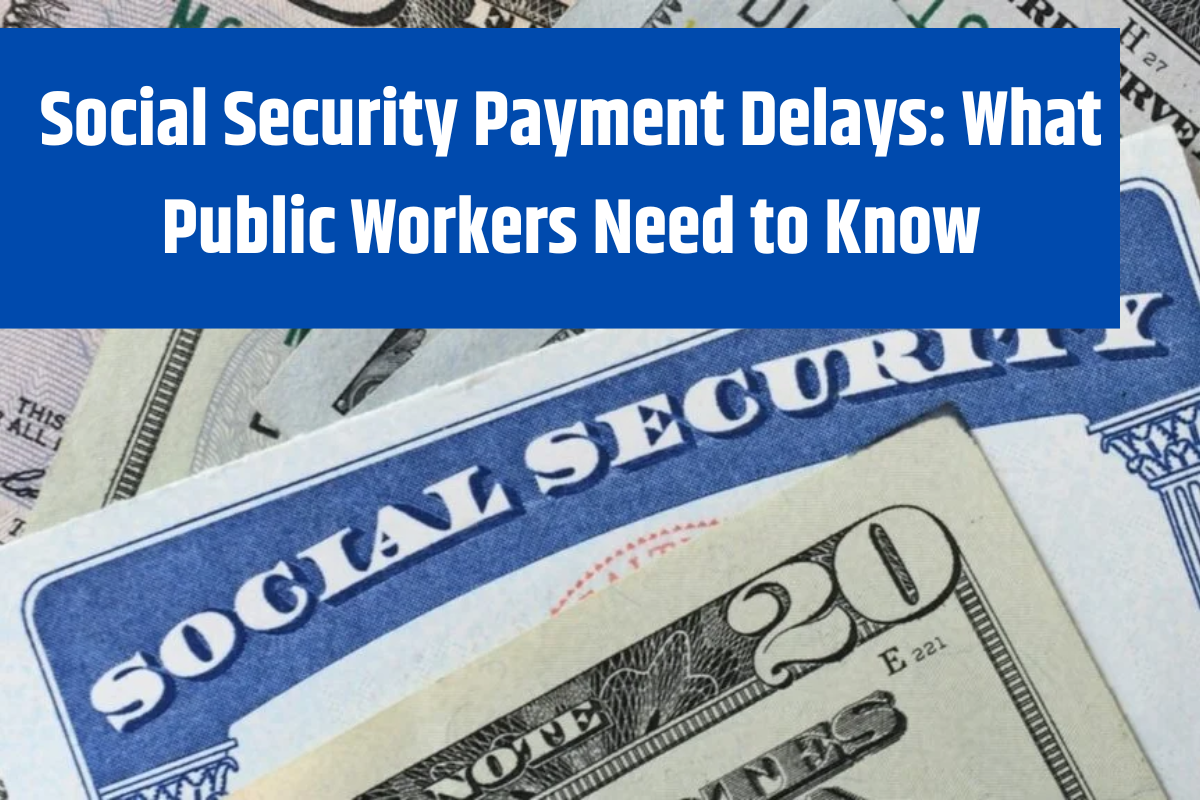The repeal of the Windfall Elimination Provision (WEP) and Government Pension Offset (GPO) is a game-changer for over 3.2 million public workers, promising higher Social Security benefits. However, the Social Security Administration (SSA) has warned that processing delays could stretch over a year due to budget constraints and staffing shortages. This means many retirees won’t see their retroactive payments for months.
Understanding the Social Security Fairness Act
The Social Security Fairness Act, signed into law on January 5, 2025, eliminates two provisions that previously reduced Social Security benefits for government employees who also received pensions from non-Social Security-covered employment:
- Windfall Elimination Provision (WEP): Reduced Social Security benefits for workers receiving government pensions.
- Government Pension Offset (GPO): Reduced or eliminated spousal and survivor benefits for those also receiving a government pension.
Public-sector employees, including teachers, firefighters, and police officers, had long argued that these provisions unfairly penalized them. With the repeal, retirees can expect a substantial boost in their Social Security benefits.
How Much Will Benefits Increase?
The financial impact varies, but estimates suggest:
- Retirees affected by WEP may see an increase of $200–$500 per month in Social Security benefits.
- Spouses affected by GPO could see a 50%–100% increase in their survivor or spousal benefits.
- Retroactive payments could total $5,000–$12,000 in lump sum adjustments for eligible individuals.
Why Are Payments Delayed?
Despite the good news, retirees face significant delays in receiving their increased benefits. The SSA cites three main reasons:
- Budget Constraints – The agency did not receive additional funding from Congress to expedite these changes.
- Staffing Shortages – A hiring freeze in 2024 left the SSA understaffed, making it difficult to process millions of adjustments.
- Complexity of Adjustments – The SSA must recalculate benefits, issue retroactive payments dating back to January 2024, and adjust ongoing payments—a time-intensive process.
As a result, retirees may have to wait 12 months or longer to receive their full benefits.
What Should You Do If You’re Affected?
If you’re eligible for increased benefits, take these steps to ensure you receive your payments as soon as possible:
✅ Apply for Benefits Immediately – If you haven’t applied for Social Security yet, do so now. The SSA prioritizes claims based on application date.
✅ Gather Your Documentation – Ensure you have records of your work history, pension details, and Social Security statements to avoid delays.
✅ Consider Alternative Financial Solutions – If the delay impacts your finances, consider options such as withdrawing from a 401(k) or IRA, picking up part-time work, or applying for state assistance programs.
✅ Monitor SSA Updates – Check the Social Security Administration’s website frequently for processing updates and payment schedules.
How This Could Impact Future Social Security Reforms
The repeal of WEP and GPO marks one of the most significant Social Security changes in decades. Experts believe it could pave the way for future reforms, including:
- Raising payroll taxes for high earners to boost Social Security funds.
- Increasing the Full Retirement Age beyond 67.
- Expanding benefits for low-income retirees.
The success of this implementation will likely influence upcoming Social Security policy debates.
Frequently Asked Questions (FAQs)
Q1: Who is eligible for increased benefits under the repeal of WEP and GPO?
Anyone who worked in a non-Social Security-covered government job but also qualifies for Social Security benefits is eligible for an increase.
Q2: When will I receive my retroactive payments?
The SSA estimates it could take 12 months or longer to process all retroactive payments due to staffing and budget constraints.
Q3: Can I appeal if I don’t receive the correct payment amount?
Yes. If you believe your benefits are miscalculated, you can file an appeal with the SSA to request a review.
Q4: Will I owe taxes on my retroactive payments?
Yes. Social Security benefits are taxable depending on your total income. Consult a tax professional to minimize liabilities.
Q5: How can I check the status of my Social Security payment?
Visit the SSA website or call the SSA helpline to track your claim.
The repeal of WEP and GPO is a victory for millions of public-sector retirees, but the delays in payments pose new challenges. Staying informed and proactive will help you navigate the process and ensure you receive the benefits you deserve. For official updates, visit SSA.gov .
